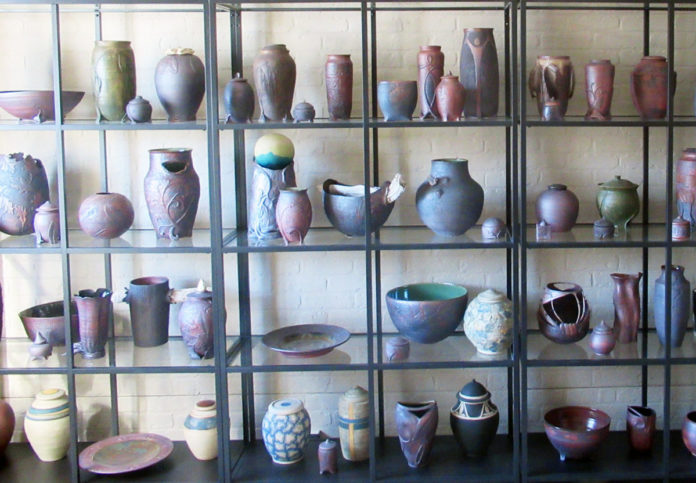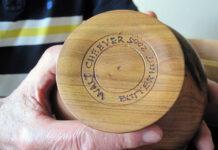Death can be a difficult subject to discuss, and everyone approaches it differently. Many people simply don’t talk about it at all, suffering silently with grief after a loved one passes. But for St. Peter artist Michelle Kaisersatt, death is a natural part of life that doesn’t need to be hidden. This belief has led her into a rather unexpected niche in the world of ceramics: cremation urns.
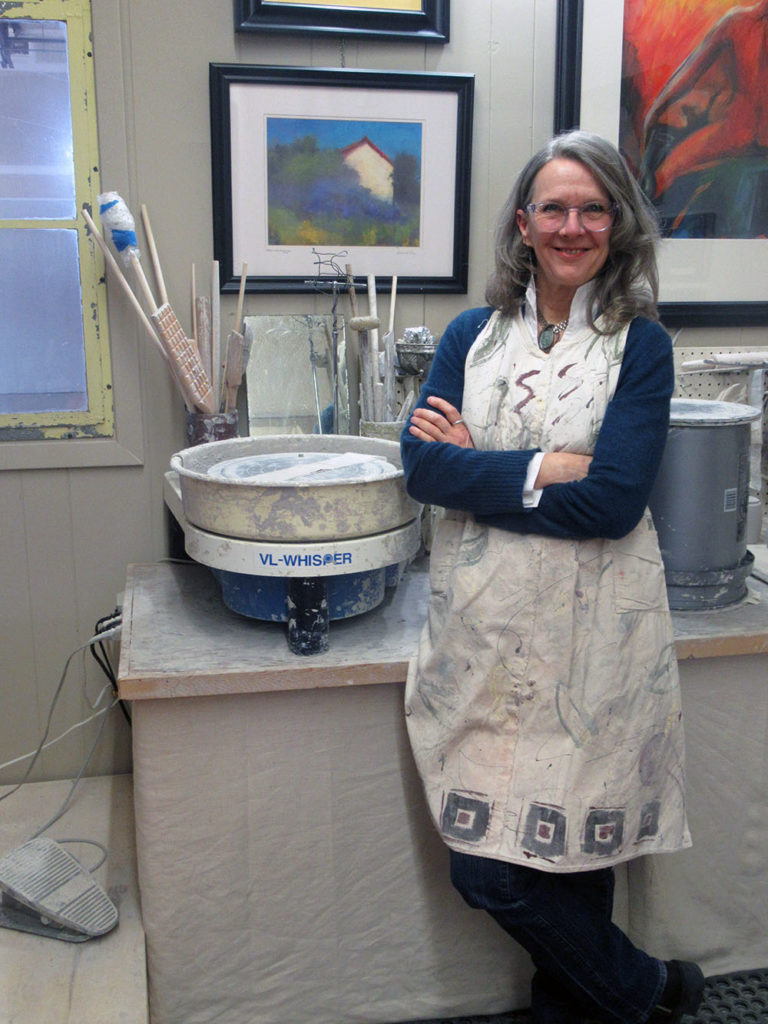
Kaisersatt began seriously making urns in 2008. She creates other types of pottery as well, but her emphasis is on the urns and life journey vessels. The idea behind life journey vessels is that the vessel is purchased by a client, used to store special memories throughout their life, and then used as an urn after their passing. (See the breakout below)
“Death has not really been a scary thing for me to talk about,” Kaisersatt said. “I know there are a number of people out there who are wanting me to make them an urn, but that’s not something most people feel comfortable saying. I think that’s what I was looking for the life journey vessel [to be], just to make people feel more comfortable, because death is no less common than birth. We’re all born and we all pass on.”
Kaisersatt herself was first introduced to the concept of death at a very young age—only four—when her baby sister drowned in a swimming pool. Since then, she has lived through many more forms of loss, including her husband Dale’s passing after a battle with cancer. Now, she works with clients to find ways to honor loved ones through her handcrafted cremation urns.
It’s really a matter of sharing their story and somehow infiltrating that into the piece. It becomes less of a purchased product and more of a sacred piece for them, too, because they’re a part of the creation process.Michelle Kaisersatt
“I’ve numerous people who approached me to do cremation urns, because of my own experience,” she said. “I feel like maybe I’m more empathetic and can relate. So, I’ve helped a number of clients create vessels for their loved ones.”
A Long Journey
Kaisersatt has loved art since she was young, but her path to becoming a professional artist was long and winding. She grew up on a farm in Le Center, Minnesota, and first explored pottery during a high school art class.
“I made little teacups,” she recalled. “But instead of being a set of teacups, I ended up having five that were all different sizes. None of them were the same. But I still gave them to my mom for a Christmas gift, and she still has them.”
I made little teacups. But instead of being a set of teacups, I ended up having five that were all different sizes. None of them were the same. But I still gave them to my mom for a Christmas gift, and she still has them.Michelle Kaisersatt
When Kaisersatt graduated, she wasn’t sure if art could be a sustainable career, so she picked something more marketable. She admits now, decades later, that the desire was always there to create a career in the arts, but she struggled with admitting to herself that it was a legitimate career path and that she was good enough to pursue it.
“I wanted to be an artist, but… I never felt like a bona fide artist,” she said. “[For many years], I was not giving myself permission to be an artist, because I didn’t want to say, ‘Oh, yeah, you were right, I can’t make a living doing art…’ I was afraid that I’d have to say I [couldn’t] do it. So I held back. I never gave 100 percent. If I would have been as risky as I am now, I would have been able to do it.”
I was addicted to it the first time that I started throwing. I love the feel of the clay through my fingers.Michelle Kaisersatt
Instead, Kaisersatt headed out to radio broadcasting school in Austin, Minnesota. She worked in that field for some time before spending time in a wide range of diverse jobs, including stints at a furniture store, a lumber yard, radio broadcasting, and a graphic design company. She also returned to school to study interior design, working as a drafter when she and her family moved to Waterloo.
Eventually, though, Kaisersatt found herself drawn back to art.
“When I turned 35… I had a moment where I was like, ‘Who am I? What are my interests? I need some creative outlet for myself,’” she recalled.
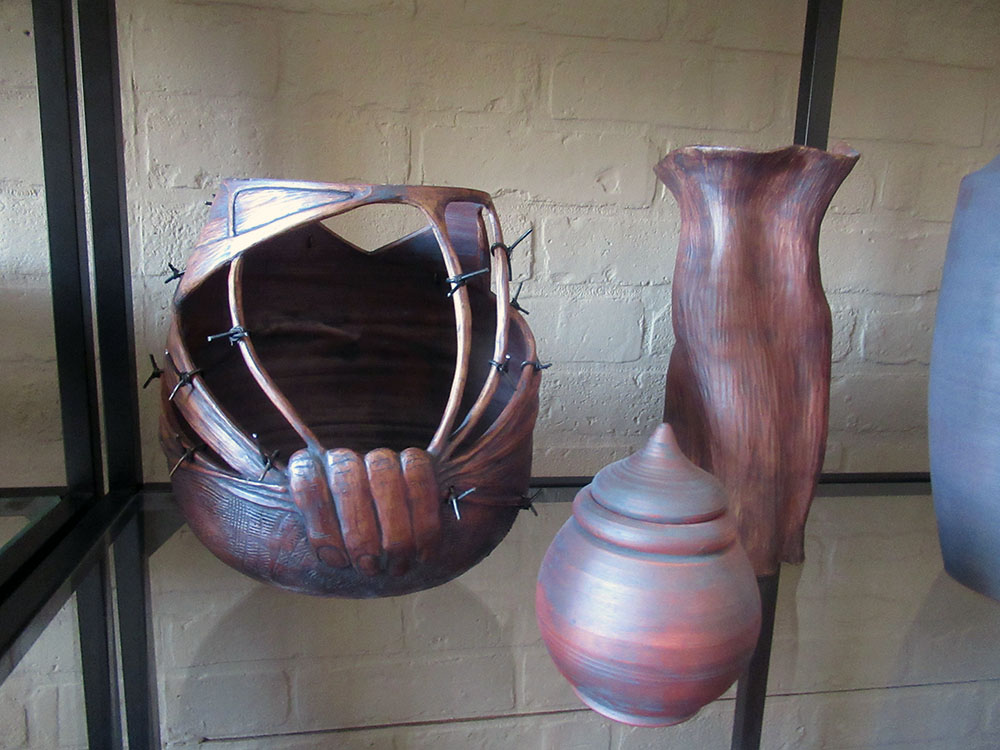
After some searching, Kaisersatt discovered pottery classes offered through the Arts and Heritage Center in St. Peter. She started taking classes once a week and by the next year, she was already co-teaching classes of her own.
“I just fell in love with it,” she said. “I was addicted to it the first time that I started throwing. I love the feel of the clay through my fingers. When I first got my own wheel, I got a kick wheel, and I loved the serenity of it. My studio was out in the woods, and I’d have all my windows open, and I could hear the leaves rustling and see the leaves blowing… It was just meditative.”
Starting Something New
Kaisersatt only had the chance to teach at the Heritage Center for a short time before it was destroyed by the infamous tornado of 1998. Kaisersatt herself was in the building’s basement when the tornado left a trail of destruction through the town, but she came out unharmed.
“That was a very, very traumatic time,” she said. “I was huddled in the hallway, and all of the sudden, the buckets of glaze started flying. The windows upstairs were exploding from the pressure. I was sitting down there, crouched on my knees, and just repeating, ‘Hail Mary, full of grace…’ I think that’s all I could say. We were all just kind of in shock from it.”
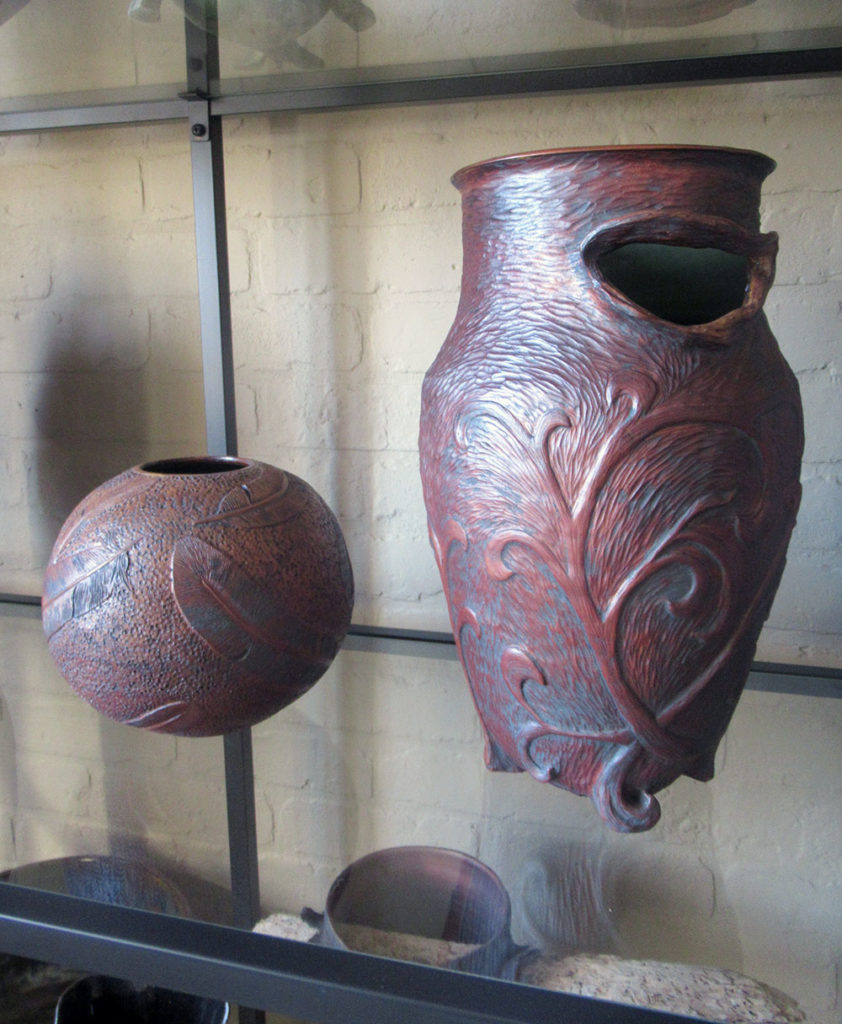
The pottery wheels that had been stored in the center’s basement were salvaged, and she moved one of them to her house. She said with no usable kiln, she wasn’t able to fire any of her pieces, so she just practiced. Meanwhile, many of her old clients had lost their homes, and she ended up helping them with interior design projects.
“While doing that, they insisted on paying me, so I’d take a little money and put it in a kitty jar,” she recalled. “I ended up building my first studio in our backyard.”
As Kaisersatt continued to create more pieces, she started selling them at more and more vendor events and craft fairs, gaining loyal customers. She decided to take the plunge and become a full-time artist, but she knew she needed to focus her efforts on something specific.
“It took me a while to decide what I wanted to do,” she said. “I knew I wanted to do pottery, but it was a little bit of a different aspect because I put so much of my soul into each piece. I asked, ‘What type of a product am I going to be able to create and blend the two characteristics together and make it marketable?’”
It was then that Kaisersatt started exploring the idea of cremation urns. Many artists shied away from creating these pieces because of the inherent focus on death, but that didn’t faze Kaisersatt. She has had many losses in life, but she said she has learned to see beauty as life goes on.
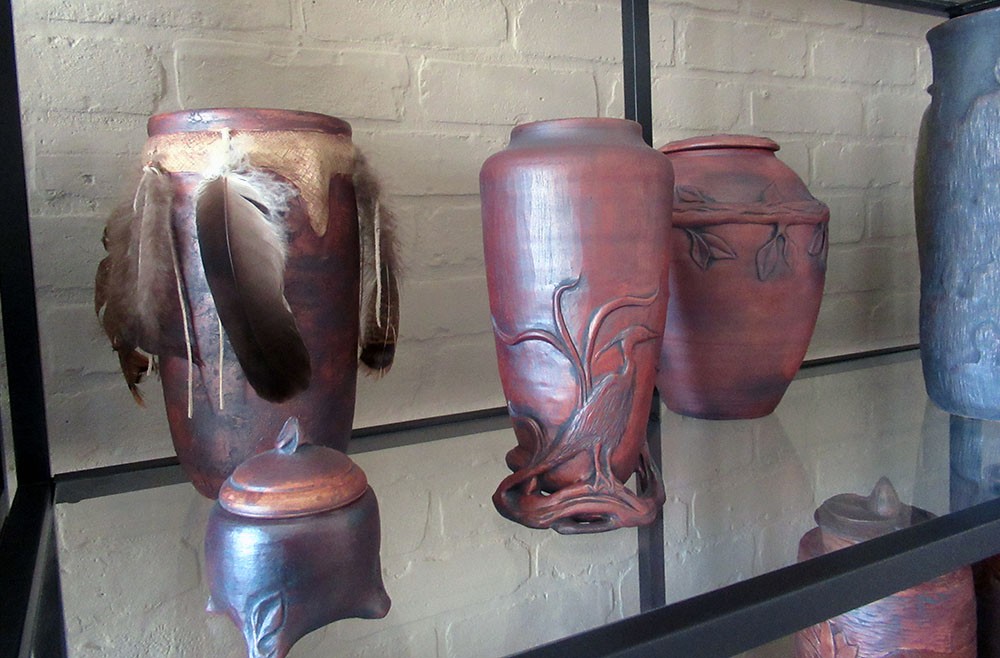
Besides the early loss of her sister, Kaisersatt lost her father in a tragic accident in 2012. The next few years were full of many other difficulties: her own serious motorcycle accident, her diagnosis of stage-three colon cancer, being fired from a beloved job at Twin Rivers Council for the Arts and having her house completely burned down after a chimney fire.
However, the greatest challenge was when Kaisersatt’s husband Dale was diagnosed with stage four colon cancer in 2013. While Kaisersatt had received a surgery that left her cancer-free, her husband’s diagnosis was much more serious, requiring extensive rounds of chemotherapy and radiation.
“People who have experienced loss will get this, especially when it is a long-term diagnosis,” she said. “You start grieving the day that the diagnosis is given. You don’t show it, because then you’re not helping your family member be strong. So I used my art during that time as my way of grieving. I would come [to my studio], and it was my release valve.”
Dale passed away in April 2017. Kaisersatt said she was able to learn from the whole experience about loving and cherishing life, whatever happens.
“During those last four years, I’d been really focusing on being strong for Dale, and it was a roller coaster ride,” she said. “You’d have one week where you’d be up and the next week you’d come crashing to the ground. It really makes you learn that you have to pay attention to everything in life. My life just kind of morphs as it goes. It’s been a very rich life, and it’s still going.”
A Delicate Process
Kaisersatt has been in her current studio, which she shares with two other female artists, since 2012. She throws on a stand-up wheel, which deviates from the standard sit-down wheel most potters use. Most of her pieces are inspired by nature and natural elements, and she enjoys finding ways to integrate items from the real world—such as driftwood and crystals—into her art.
“I’m always trying to learn how to reflect different textures or elements, like wind or water rippling,” she said. “I started a couple years ago really loving the idea of bringing nature elements into my work.”
By her own estimation, each piece takes countless hours for Kaisersatt to create, in a long process that starts with the spinning wheel and continues through trimming, firing, glazing and other steps before she has a finished product. Her pieces feature delicate and intricate designs that are often inspired by nature, and she rarely adds clay to her original piece; instead, she carefully and skillfully carves away to create the trailing vines, detailed feathers and other embellishments found in her art. If her clay breaks during this intensive work, there is no way to fix it.
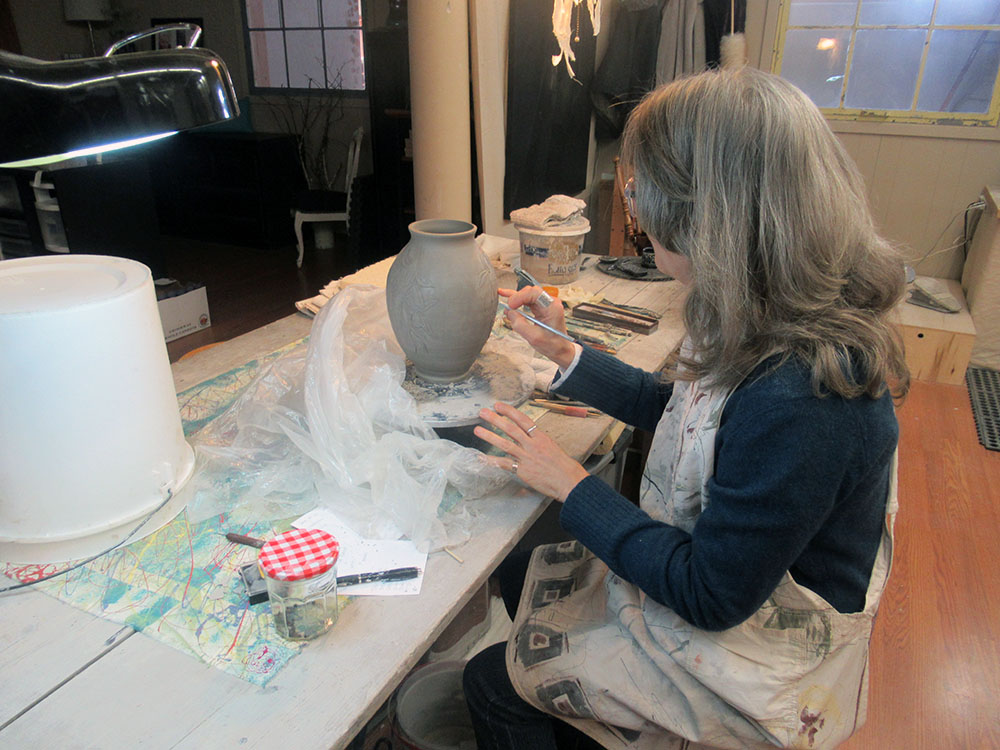
“That’s one of the interesting things about pottery,” Kaisersatt said. “You can love a piece from the first day that you throw it, but you can’t embrace it yet. It’s not complete. There are so many things that can go wrong with it, all these variables that are in between that could make it go awry. I’ve had pieces where I’ve just had to hold my breath and say, ‘Okay, if the universe wants me to have this piece, thank you… And if not, ok, there’s obviously something else that I’m supposed to be doing.’ I’ve had a few pieces I’ve had to toss… You just kind of have to let it go.”
As Kaisersatt works with clients to create a cremation urn for a loved one, she weaves in details such as a person’s favorite plant or materials that evoke something they loved in life. One client in California wanted an urn for her husband, who died in a motorcycle accident. The client shipped Kaisersatt many of the gears and chains from her husband’s motorcycle, and Kaisersatt was able to incorporate them into the finished urn. Another client had planted a tree as a memorial to the person who died, so Kaisersatt carved leaves from the tree into the vessel.
“It’s really a matter of sharing their story and somehow infiltrating that into the piece,” she said. “It becomes less of a purchased product and more of a sacred piece for them, too, because they’re a part of the creation process. It’s always been a really enriching experience for both of the parties involved.”

